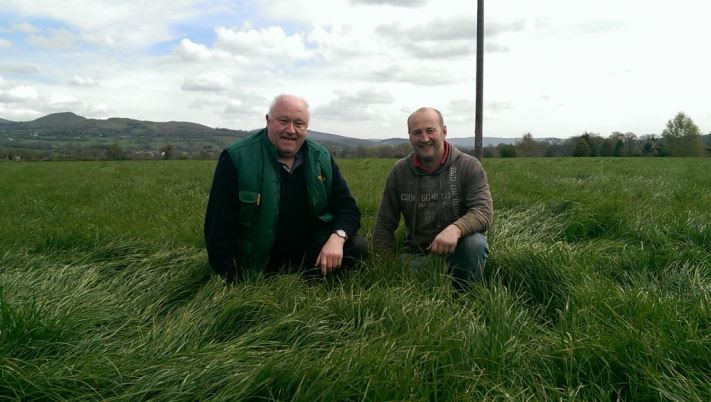Broadsword Hi-Pro produces phenomenal silage yield
A new ryegrass and red clover ley drilled last September, produced a bumper first cut for Ben Beddoes at Common Piece Farm, Churchstoke in Powys on 21st May.
.JPG)
Tonnes of ryegrass and red clover being mown for silage on 21st May at Ben Beddoes farm in Powys.
Mr. Beddoes runs a herd of 220 MRI X Holstein dairy cows on 121ha (300 acres) of part-owned/ part-rented land, alongside an egg enterprise of 40,000 laying hens. For the past nine years the family has also made ice cream, which is sold locally under the Dairy Dreams brand.
The cows graze from April to October and calve all year, producing an average of 8,000 litres of milk. First cut silage is taken from 57ha (140 acres) of cutting leys and 20ha (50 acres) of maize, half of which is drilled under plastic. The conserved forage is fed in a 60:40 ratio in a TMR to the cows when they are housed in winter.
"Silage is a really important feed for us,” says Mr. Beddoes. “We need quantity and quality, which is why we reseed with a high yielding ley that has at least 15% red clover in it.
“We bought this field last year and it was in a bad way. We applied 3t/acre of lime before ploughing, then reseeded with Broadsword Hi-Pro, supplied by R A Owen and Sons, which we have used before.

Ben Beddoes (right) and Colin Owen from R A Owen & Sons inspect the Broadsword Hi Pro on 1st May 2015.
“It had a lot of poultry muck and slurry and was grazed twice with sheep to thicken it up over winter. It established really quickly, and just grew and grew, despite the coolish temperatures. The amount of grass and clover has been phenomenal, producing even more silage than we had anticipated. We expect to take three more cuts from it this year.”
The crop was mown on 21st May and harvested through a forage wagon, producing silage with a long chop length, which Mr. Beddoes feels is better for cow health. There has only been one displaced abomasum over the past six years since he started harvesting the grass this way.
